SC Moatti who beautifully captures what it takes to make a mobile product successful in her book Mobilized shared this with me as we recently exchanged thoughts on mobile growth:
“Customer expectations on mobile are high. If a company fails to nail the first experience, there won’t be a second one and growth will suffer. The Net Promoter Score (NPS) has become a standard metric on mobile because it establishes a clear link between the quality of a customer’s experience with the rate of a company’s growth”.
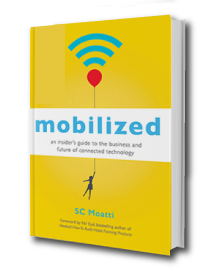
Product experience and growth are intimately related as per SC’s inspiring insight. In these 17 actionable mobile growth hacks, we’ll seek to understand why and how. I’ll include actionable resources you can act on today in chronological order so you can start growing mobile in new ways.
Tip #1 : Product-Market fit first and foremost
Sean Ellis is most likely the most eloquent growth marketer when it comes to explaining the underestimated value of product-market fit aka PMF. This directly applies to your mobile growth.
At this point in this video, Sean drives it home.

You must iterate your mobile app product until the first-time use experience you deliver creates an aha moment. It’s that pivotal moment, also known as “activation” in growth marketing, when your clearly defined core customer realizes in the first 4 to 5 seconds of use that there is something amazing in it for them.
To achieve this, you must align two dots: core customer assumption and core benefit.
The core benefit is the one thing you decide to focus on to deliver aha. The core benefit is ideally so strong that your mobile app experience becomes a “must have”. Your core customer would be very disappointed should she no longer be able to use your app again.
Deliver aha in the first 5 seconds. Don’t miss this one chance.
Tip #2 : Get to aha without wasting the resources you don’t have
There are several ways to discover product-market fit in the early stage of your mobile app.
You actually don’t need to have a full-fledged app developed. I saw startups achieve product-market fit on fake products. You can, for example, hard code the data that will then be coming from api calls on cloud services or social platforms.
Who cares?

Here is a concrete example on a mobile app I designed and coded a while ago.
Although it’s a fake experience with fake data, you hear the aha moment(s) in the tone of voice, the emotional excitement of the target must-have user when she understands what’s in it for her.
Do that first. Fake it fast. Get to aha.
Tip #3 : Be agile when you explore Product-Market fit
Today, you can use mobile cloud testing platforms to recruit mobile app test users in a way that allows you to validate your core targeting assumptions quickly.
In less than one hour, using usertesting.com you can get a detailed video of your assumed must-have user persona using your app. Hopefully, you can hear in it that the core benefit delivers the aha you are looking for.
If your mobile app sends your must-have users to experience your core benefit in the physical world, imagine for example you are working on a next generation mobile meal service where people will need to get to a restaurant to fully experience your mobile journey, then you may want to consider a service like respondent.io to explore PMF.
Both platforms allow you to leverage very precise persona targeting dimensions, including demographic and behavioral ones, so you can hone in on and vet your must-have target customer assumption.
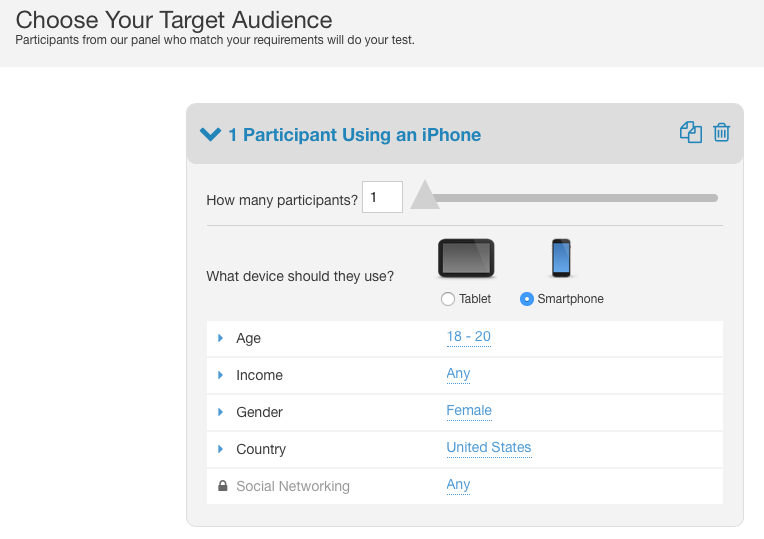
You can have them answer core qualitative questions (see how in next tip) that are going to be of precious value for you to understand if you’d better iterate or pivot your mobile app experience on the same core target persona assumption, or instead, if you are better off keeping the same experience and targeting it towards a different user persona.

Be agile. Do it fast. Focus.
Tip #4 : Extract the why from must-have post experiences
Get the customers who are going to perceive your mobile app experience as a must to tell you why they feel that way. Bottle the why. Sell it.
To do that, after you know your core user has experienced your mobile app flow in its entirety, you can simply use an online surveying tool such as SurveyMonkey.
Ask the must-have users, those who perceive your mobile value as a must-have in their life, why they feel that way. Simply ask them “What is the primary reason why you’d feel very disappointed should you no longer be able to use our mobile app?”.

As you understand the why, you can clearly focus your messaging on the core benefit that leads to the amazing feeling your mobile experience provides to your first-time users. You get actionable insight to laser focus on the core value of this benefit and capture it in simple and crisp language. Imagine 2 or 3 words like “Love made easy” or “Rides on tap”.
This should be your content anchor, or bait. Your hero messaging on your homepage if you still have a website. You can articulate your content strategy from this core value and look to achieve topical depth.
That way, you can reel in like-minded mobile app must-have users at the lowest possible cost per acquisition after what you get via word-of-mouth and in-app referral.
Why don’t you ask why?
Tip #5 : Seed your Product-Market fit for organic Mobile Growth
You may start from qualitative data to iterate your mobile app experience flow all the way up to quantitative data. Think 40% of statistically significant must-have user sample who say they’d be very disappointed for not being able to use your mobile app any longer.
At that statistical point and beyond, you are likely to have achieved a decent PMF signal. PMF is a journey, not a destination, as we’ll see later, growth teams and products team continuously need to collaborate to define and refine PMF.
When you achieve some sort of PMF, seed it. That is, assess how likely and how quickly your mobile product is to grow on its own from user referrals.
Seek to understand how the aha moment that you validated in the first-time mobile app use can lead you to assessing your referral root.
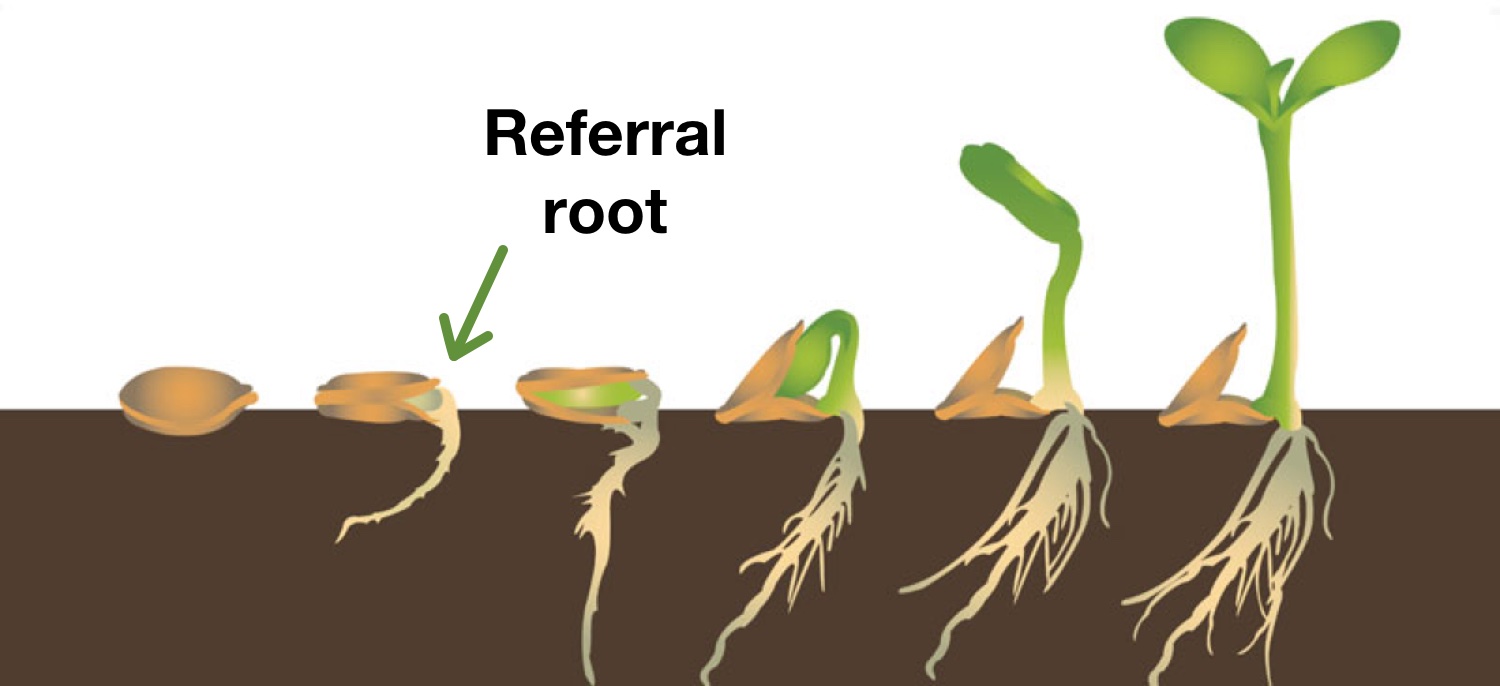
When you create a great first-time experience, you are going to see repeat usage patterns from your must-have users. As you keep over delivering on their expectations, there is a point where you can use them to refer other users.
Do it at the right time.
I like to target users who are using the app for the third time over a relatively small amount of time. That small amount of time depends on the nature of your product cycle. For an everyday meal service, a week works. For a hotel booking experience, this can take longer.
You can use “Give Get” offers via in-app messages or push notifications to do that or even build it into your product as Hotel Tonight does it – see gift icon in their bottom navigation:

That’s your referral root.
It’s tiny in the beginning. But it’s the most promising and most cost effective way to grow. You grow in-app out. You grow organically. Initially, Uber’s mobile growth engine was largely fueled by word-of-mouth referrals, this is even better.
Tip #6 : Jump-start organic Mobile Growth with inorganic fertilizer
One way to jump-start the organic growth germination process is actually to put some inorganic fertilizer. You can leverage the big data graph of the main social players to reach your must- have mobile app users in a highly targeted fashion.
You can tap into thousands of possible ad targeting parameters!
To stay nimble and iterate quickly on inorganic Facebook mobile install campaigns, I use their Ads Manager App which has been around for some time:

At that point, scale and being able to achieve statistical significance is straightly related to your budget. What I am looking to achieve here is decent scale, thousands of users, at phenomenal speed.
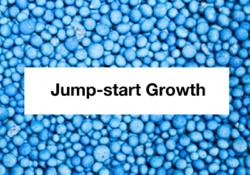
To give you an order of magnitude, when you do it right, you can acquire them in the range of $0.50 – $2 a pop.
Therefore, in each grand of your budget you could deliver an actionable number of potential referrers over a short amount of time. You can do that in less than a week sometimes.
Then you start seeing your referral root grow. You understand out of a solid user sample of thousands what is your referral percentage and how quickly you get to that number.
You jump-start your referral engine.
Tip #7 : Use Mobile Engagement analytics early to spread the love
There are low-tech ways to start getting a feel for the speed of your referral growth engine.
For example, you can set up old-fashioned personalized promo codes for each of your early must-have users and share these with them via email.
You can now do much better. Much faster.
In my opinion, Pyze has a strong mobile engagement and mobile marketing automation solution that will knock your socks off.

When you integrate with Pyze, which will take you less than half an hour on both your iOS and Android apps, you can act on engagement and retention cohorts in an incredibly nimble way.
They have really thought out their interface design and made it actionable in very few clicks:
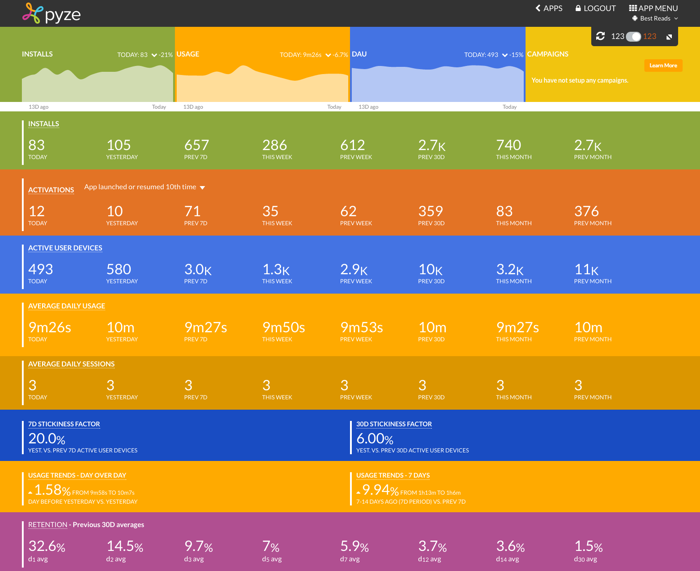
Auto-segmentation makes you understand at a glance who your high-value users or attrition risk users are in your app.
You can easily decipher behaviors based on loyalty metrics, usage metrics, and app specific business logic. Pyze Intelligence Explorer allows real-time explorations across different user segments that are created on autopilot.
You don’t need to do a thing!
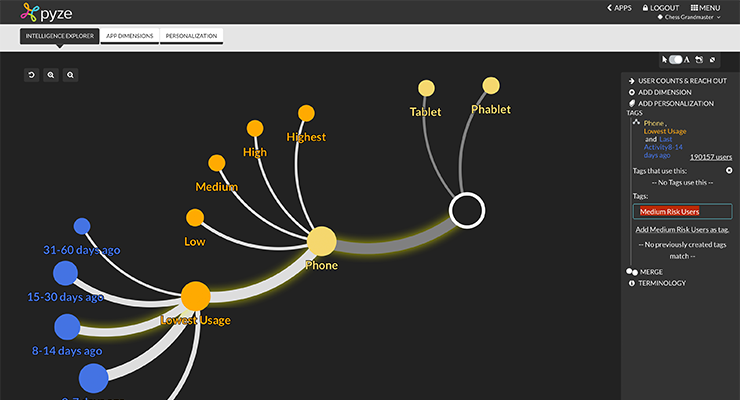
Mobile engagement leads to retention, repeat use, the lifeblood of your mobile app growth. With an innovative mobile engagement and mobile marketing automation platform such as Pyze, you can send in-app messages and push notifications by targeting dozens of in-app behaviors in a matter of seconds. It’s simple an easy.
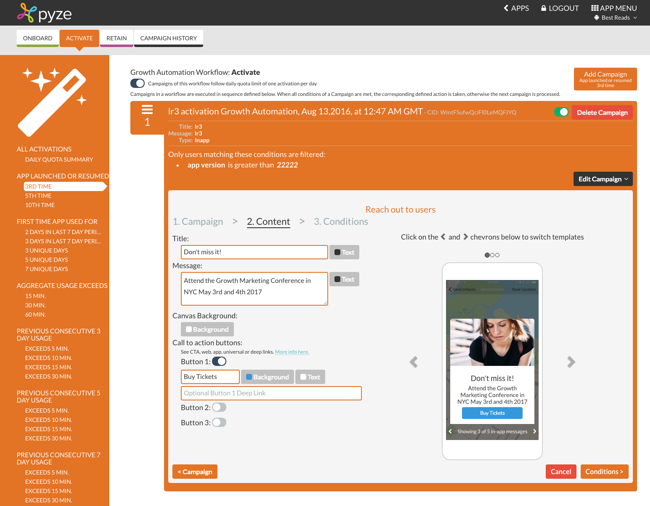
Engagement metrics such as number of times users are engaging with key app features or total time spent are much more important than vanity mobile app metrics that hold barely any business value – such as downloads or even daily active users or mostly active users.
When you understand mobile engagement, you can determine how, when, and where you have the highest chance of getting your engaged mobile users to refer your experience to others.
You can run nimble tests very quickly to zero in on your best growth opportunity.
You understand why they love you and how you can spread that coveted mobile fan love.
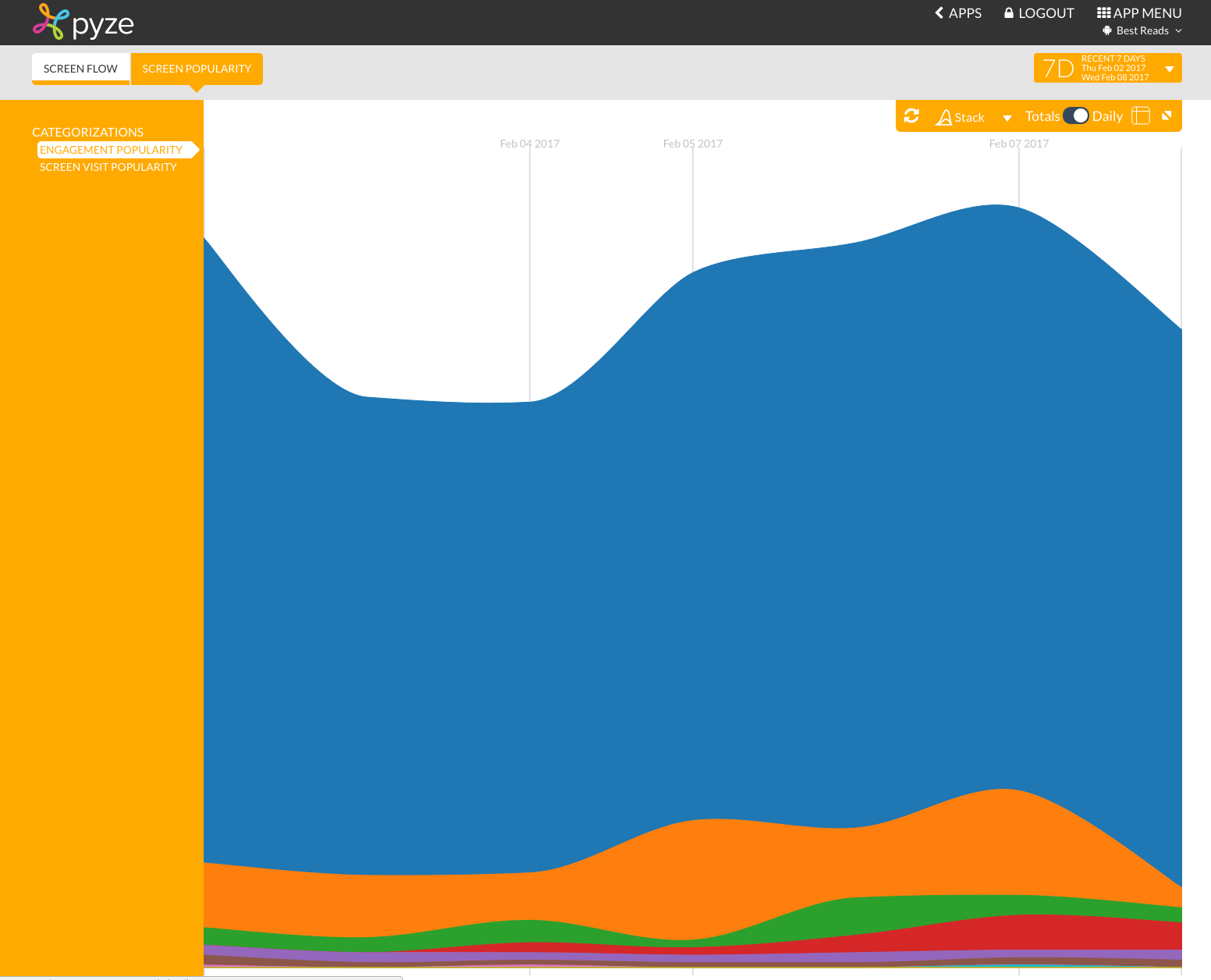
You also gain growth discovery speed by dissociating growth from product in a way.
You don’t need to wait for a new mobile build to launch to test an in-app growth hack. This can have a significant learning impact in organizations where the product iteration process is not streamlined yet.
Here it’s solved. Done.
Tip #8: Mobile Marketing Automation as a rolling snowball
The beauty of such Mobile Marketing Automation (MMA) platforms is that they allow you to modify your mobile app flow without having to push new builds to the app stores.
You can become very strategic as to when, how, how often and to whom you want to reach out within the flow of your mobile experience to spur further mobile app engagement, new aha moments and thereby increase your referral factor. More people will be referred by your existing power users, faster.
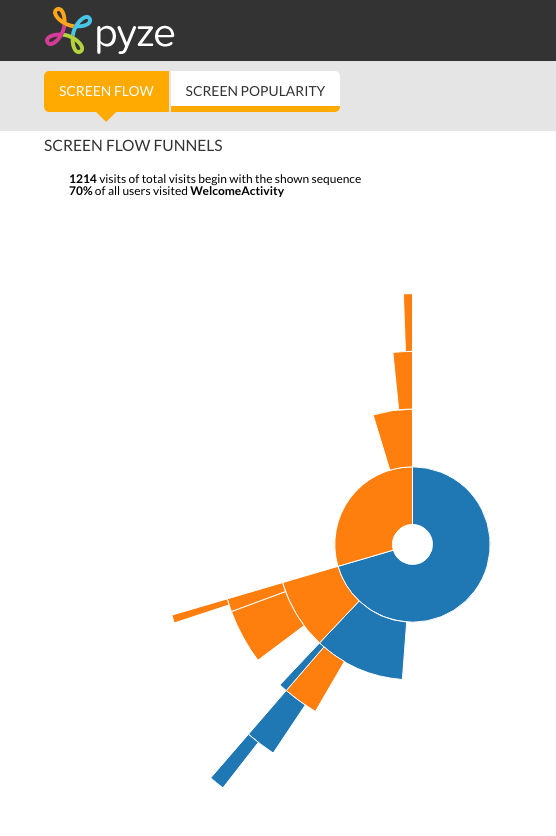
You create rolling snowballs. You focus on traction. You grow faster.
Here is an example of the kind of MMA flow you can design to grow your mobile app on autopilot:

Can you snowball now?
Tip #9: Use snowballs to make snowmen!
When you get to snowball mobile app growth, your experience is clearly having an impact on your target audience. As you automate some of your growth, you not only gain actionable insight for future growth but you also understand what the next generation of your product experience for a given persona should be.
For example, let’s assume that you got into the product-market fit zone with a mobile meal ordering app. Let’s also assume that your must-have persona was the busy professional in a main business district of a major city.
You focused on making lunch easy for that persona, you discovered that they are convenience-focused. Your target recognizes your convenient value proposition and uses your lunch service on a regular basis.

From this repeat pattern, you have started to explore how you could expand your lifetime value by sending in-app messages for breakfast or dinner offers.
You see what bites.
You can now re-engineer your mobile experience by integrating this new revenue growth knowledge into the future iterations of your product.
You did it fast. You mitigated the risk of building without biting.
Achieving product-market fit can be so powerful, and if you did it right you kept large market sizes as a core component of your thinking, that you can grow on one persona for years. But there can come a time when you need to go after new target customers.
That’s when you make new snowmen. It starts with a snowball first.
Tip #10: Iterate your onboarding if you need oil in your gear
When you nail your mobile app user experience, I am a firm believer you don’t need any onboarding. Your mobile experience, through its simplicity and atomic design, intuitively draws your must-have user into understanding and experiencing its core value in an instant.
It’s a mindless process. A split second.
Nonetheless, most apps don’t achieve that. And many need to oil the first-time use experience with an onboarding flow to explain what the app and its value-add facets are before the user actually gets in-app.

Along the lines of what I started to explain before, this shouldn’t be a static game. You can use Apptimize to iterate quickly on your onboarding flow and make sure the leading arm of your persona snowman is also a relevant and helpful hand to that persona.

Iterate your onboarding. Do it fast. Personalize.
Tip #11: Start App Store Optimization before you hit the stores
For many mobile startups, I have noticed that App Store Optimization (ASO) is an after thought.
It makes sense sometimes for agile reasons to hit the stores sooner rather than later. To grow your mobile app organically once you hit the stores, that’s another story. You cannot really do that without ASO unless your product-market fit leads to such a strong referral factor that you might as well just sit back and watch your mobile shuttle lift off on its own.

You should think strategically about ASO.
First, it’s important to understand that the app store primary category you pick directly influences your odds of growing organically. ASO is a complex game but when you want to be featured among the top players, the number of downloads you get per day becomes a core ranking parameter.
In some categories, you never gain organic visibility unless you score several tens of thousands of downloads per day. This generally doesn’t happen on day one. If your core category requires a large number of daily downloads for a chance to get to the top of the store, you should research adjacent categories with lower competitive volumes so you can make inroads faster in that category. As you build your app brand, you can then switch to your core category.
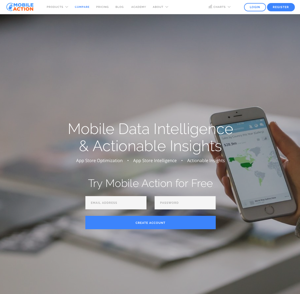
To get started with ASO, I recommend looking into Mobile Action. They make ASO actionable.
You can check out their ASO academy as well.
They have very good content and they offer several forms of certification.
The rankings on the Apple App Store and the Google Play Store are influenced by a multitude of factors. Even though some factors overlap, some key influencing factors are totally different from one store to the other.
One example, on the Apple App Store, the keywords you put in the title field and in the keywords field via the iTunes Connect Developer Console do have an impact on your ranking for these keywords. This is not the case on the Google Play Store, the title field is known to have no influence on rankings.
And there is no keyword field to update in the Google Play Developer Console. When you use the Google Play Developer Console to update your mobile app marketing content for the Google Play Store, you should instead consider the short description and the full description fields to take care of your keyword metadata.
Think density of core keywords you optimize for about 2%.
Bear in mind that ASO is an iterative game.
There are many other factors that directly influence your mobile app store rankings. Keywords may not be sufficient to rank in the Top 10 based on keywords search, number of searches and number of downloads have a strong impact, too, in my experience.
This may be the object of another post since I have learned and keep learning every day on this fast moving topic.
Accountability though is easier to implement in my experience than on other, still fairly nebulous, channels such as SEO. Great change is coming in SEO apparently. I spoke to DistilledODN recently and I am excited about their new scientific approach to SEO.
For accountable ASO, you can check out TestNest.
They have an interesting way to empower you to do self-serve A/B testing for the app stores. You can relate your ASO actions to actual growth metrics such as app store page conversions. You get to test several elements such as app icon, screenshots, app video, description, name, price and see what moves the needle and by how much.

Tip #12: Boost Channel-Market fit with Mobile Attribution
There generally is a stage in your mobile app growth, post product-market fit and beyond the early referral engine signal where you have gathered factual evidence of your good net promoter score aka NPS, where you look to focus on the marketing channel that gives you the most growth steam for the lowest amount of operational effort.
I like to call that growth stage the channel-market fit stage.
This can, for example, happen on Instagram or Snapchat as you look to target younger demographics. The attributes of your persona should directly translate into the type of channel you want to explore first.
Mobile attribution can help you explore much faster. You connect source to steam.

There are a number of solid mobile attribution platforms out there.
Mobile growth is in full swing and a leading player called AppsFlyer has recently raised a massive round of funding. We are certainly on our way to lighting up the entirety of the mobile conversion funnel. Multi-touch attribution included.
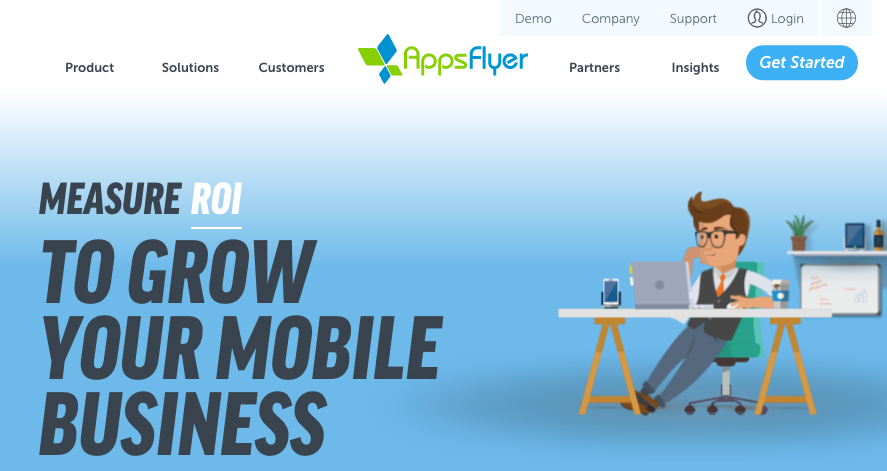
Here is how you can attribute your mobile ad spend back to their media sources. You should look at in-app engagement and revenue, not just installs. Installs can just be soufflé when you haven’t achieved product-market fit – as most mobile apps don’t…
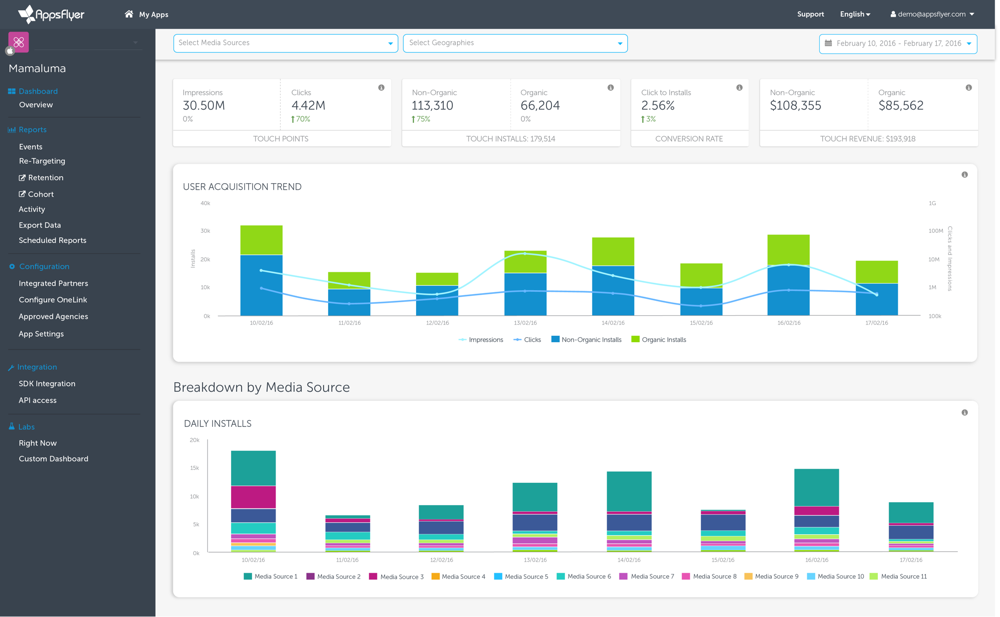
Make sure when you select a mobile attribution partner that it will give you real-time data, specifically revenue that ties back to the ad spend that drove that revenue. This is important to get to real-time Return On Ad Spend (aka ROAS, the ratio of Revenue over Ad Spend).
It’s a good starting point.
Then, over time, you can start looking at longer play ad optimization – think LTV/CAC (Lifetime Value over Customer Acquisition Cost, one of VCs’ favorite value metrics in the Silicon Valley).
This takes longer spans of time since you sometimes need months, even years in some cases, to understand the full value of your customer relationship lifecycle with your product. You can look at annual LTV to keep it simpler but you won’t get the full value of your experience that way.
Once you identify the media source that produces the highest ROAS, seek to increase spending to iteratively reach the tipping point.
Driving growth depends on your unit analysis.
That is, the relationship between your revenue, your gross margin (Revenue minus cost of good sold or cost of service sold if you don’t sell goods) and your contribution margin (gross margin minus Ad Spend).
Some companies optimize for revenue growth, they are looking to grab market shares to keep the closest alternatives at bay even if they may be at an ad spend point beyond diminishing returns on margin – see point a1 on the following graph.
Others look to maximize contribution margin without maximizing total revenue.
It comes down to exploration to get to the tipping point or margin sweet spot. See this directional graph based on personal experience scaling paid media channels for an idea on this:

Growth needs to collaborate with the leadership team to align on the growth optimization goal.
Mobile attribution is very useful at this point. It can allow you to identify quickly the channel where you achieve channel-market fit best and understand where your sweet spot is located.
Then, you can expand your marketing spend into other channels. Your CAC is very likely to keep on going up as you do so since the lowest amount of friction, by definition, happens on your channel-market fit channel.
Since it’s well known that a lot of steam comes from Facebook on mobile, and this is confirmed by hands-on experience, I recommend starting your mobile attribution partner research with Facebook MMPs (Mobile Measurement Partners).
Explore fast. Identify channel-market fit. Find your sweet spot.
Tip #13: Connect attribution and engagement
Acquisition and engagement are two different animals. You can explore and discover via mobile attribution a source of mobile acquisition that is very prolific to expand the top of your mobile app growth funnel. You notice that your cost per install is much lower than through other channels.
This doesn’t really matter.
What matters is to discover mobile growth sources that drive engagement and repeat use. That’s the money maker. That’s the mobile app growth that counts.

To do that, although you will notice that not all integrations between mobile attribution and mobile engagement platforms have been completed yet, you need to connect your mobile attribution partner to your mobile engagement vendor.
Before purchasing a solution, attribution or engagement, be sure to ask which integrations they are able to complete.
Some mobile analytics platform do cover both attribution and engagement at once. Nonetheless, at least in my experience, I have noticed that the best-in-class focus on one aspect of the mobile growth funnel and do it extremely well. Much better than their closest competitors.
Product-market fit anyone?
Keep that in mind. Connect mobile growth attribution and engagement. Ask early.
Tip #14: Think in-person over digital
As we do mobile growth marketing, we tend to get vacuumed into the digital nature of the mobile channel. We can forget the human.
Mobile connects humans, or at least, humans to relevant service or product information. So you must think human.
In-person targeting has been a key to success to many mobile matchmaker players. One of my favorite example of that is the Tinder mobile growth study at GrowthHackers.com.
How smart is that?

They tapped into the clearly defined supply-side of their two-sided mobile app marketplace, the female “Greek Letter” student belonging to a sorority, to attract the demand-side in an instant. They achieved a lot of that via in-person marketing events directly on campus.
Think human. Meet in-person. Grow mobile stronger.
Tip #15: Build an A-Team
Team. Team. Team!
Mobile growth is a team game. You cannot do it alone.
You need to surface an A-team from your organization that will have leaders in product, engineering, design, growth and customer success at least. They must work as one.

You need to define a solid team process so that you can leverage each core competency to be baked into your mobile app experience nimbly. This reminds me of my soccer days in Europe. Think “tournois de sixte” – a type of soccer tournament where six players play against six others.
You play fast. You score many goals. It’s so much fun!
As SC Moatti puts it: “PMF is very shifty, you reach it, then grow a little, then it escapes you and so on. Growth teams need to work closely with product teams to constantly define and refine PMF.”
Does that call for cross-functional A-Team work?
Recruit for mobile growth. Do it well. It’s foundational teamwork.
Tip #16: Look beyond apps
What is true in mobile growth today is most likely no longer true tomorrow. You should look and think outside the mobile app box.
We are seeing interesting signs of promising mobile experiences in new spaces such as mobile chatbot, AI and more.

Will we still be downloading apps in 10 years from now?
Many of the core mobile growth hacks I have shared so far apply to new forms of mobile experiences. You should start exploring them as they are likely to accelerate in the future. And when you ride the wave earlier, you grow faster.
Tip #17: Remember Antoine
When you iterate your way to sustainable mobile growth, you grow into realizing that some of the key principles of innovation and creativity that have been highlighted by brilliant minds centuries ago, work.
Keeping that in mind, I’d like to leave you with one last mobile growth hack in mind from the father of the well-know “Le Petit Prince” book – Antoine de Saint-Exupery:
“Perfection is achieved, not when there is nothing more to add, but when there is nothing left to take away.”

So…
What can you remove from your current mobile app to become laser focused?
To do one thing extremely well and grow much faster as a result?
Keep growing!